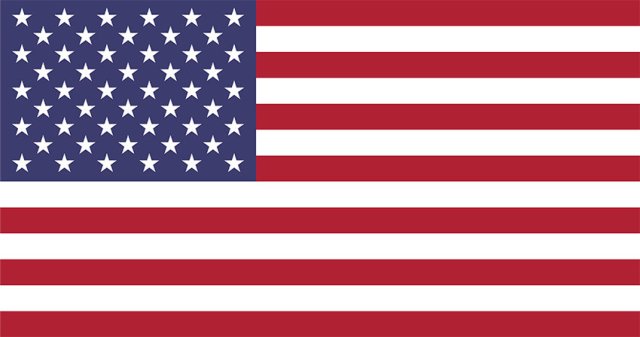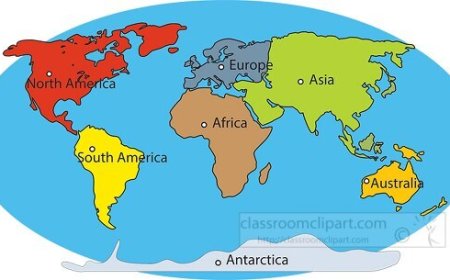North America: Countries, Geography, and Cultures for Students

🗺 Introduction
North America is a land of amazing variety, from frozen tundras in the Arctic to sunny tropical beaches in the Caribbean. It's home to more than 500 million people across 23 countries, including the United States, Canada, and Mexico. This continent features everything from snowy mountains and giant lakes to ancient ruins and busy modern cities.
In this article, you'll discover North America's unique geography, cultures, wildlife, and history-plus fun facts and a quiz to test your knowledge.
🌍 Geography of North America
North America is the third-largest continent in the world. It stretches from the icy Arctic Ocean in the north to the warm, tropical Caribbean Sea in the south. It is bordered by the Atlantic Ocean on the east and the Pacific Ocean on the west.
The land includes many different environments:
-
The Rocky Mountains and Appalachian Mountains run through the U.S. and Canada.
-
The Great Plains cover large parts of the center of the continent, providing rich farmland.
-
The Great Lakes, shared between Canada and the United States, are the largest group of freshwater lakes in the world.
-
The Mississippi River, one of the longest rivers in the world, flows through the United States.
North America also includes many islands and island nations like Cuba, Jamaica, Haiti, and The Bahamas.
🗺 Countries and Regions
North America is made up of three main regions:
-
Northern North America includes Canada, the United States, and Greenland (a territory of Denmark).
-
Central America is a narrow strip of land that connects North and South America and includes countries like Guatemala, Honduras, and Panama.
-
The Caribbean includes over 7,000 islands, such as Cuba, Haiti, and the Dominican Republic.
Mexico is often considered part of both North America and Latin America due to its language and culture.
The largest countries by area are:
-
Canada (2nd largest country in the world)
-
United States (3rd largest)
-
Mexico
These countries all have large populations and diverse cultures.
👨👩👧👦 People and Cultures
North America is one of the most culturally diverse continents. People here speak many languages, including English, Spanish, French, and Indigenous languages like Navajo, Maya, and Inuktitut.
North America is home to people of many backgrounds. Immigrants from Europe, Africa, Asia, and Latin America have brought their traditions to the continent. This has created a rich mix of food, music, religion, and customs.
Indigenous peoples lived in North America long before explorers arrived. Their cultures still play an important role in many regions today, from traditional art to place names and ceremonies.
🦅 Wildlife and Nature
North America is full of incredible wildlife. In the forests, you might see bears, deer, or wolves. In the deserts, there are lizards, coyotes, and rattlesnakes. Along the coasts and oceans, you'll find whales, sea turtles, and seabirds.
Some of North America's most iconic animals include:
-
Bald eagle - a symbol of the United States
-
Bison - once nearly extinct, now making a comeback in the Great Plains
-
Moose - found in northern forests of Canada and Alaska
-
Alligators - live in the southern swamps and wetlands
Protected areas like national parks help conserve this wildlife. Famous parks include Yellowstone, Banff, and Yosemite.
🏛 Landmarks and History
North America is full of natural and human-made landmarks. Here are a few that stand out:
-
🗽 Statue of Liberty (United States) - A symbol of freedom and immigration
-
🌉 Golden Gate Bridge (United States) - A famous red suspension bridge in San Francisco
-
🏞 Grand Canyon (United States) - A deep and colorful canyon carved by the Colorado River
-
🏯 Chichén Itzá (Mexico) - An ancient Mayan city with pyramids and temples
-
❄️ Niagara Falls (Canada/United States) - A powerful set of waterfalls on the border
-
🏔 Canadian Rockies (Canada) - Beautiful mountains great for skiing and hiking
Historically, North America has been home to ancient civilizations like the Maya and Aztecs. European colonization began in the 1500s and shaped the languages and borders of the continent.
🌍 Why North America Matters
North America is a center of innovation, education, entertainment, and business. It's where Hollywood movies are made, global companies are headquartered, and important political and economic decisions are made.
The continent's natural resources, like oil, forests, and farmland, are vital to global trade. North America also plays a major role in protecting the environment through conservation efforts and climate research.
It's a continent full of ideas, progress, and diverse voices working together in a rapidly changing world.
📚 Vocabulary List
| Word | Definition |
|---|---|
| Continent | One of Earth's seven largest land areas |
| Diverse | Made up of many different kinds of people or things |
| Tundra | A cold, treeless region found in the Arctic |
| National park | A protected area of land set aside for nature and public use |
| Indigenous | Native to a certain place; the first people to live there |
| Immigrant | A person who moves to another country to live |
| Civilization | An advanced society with cities, government, and culture |
| Economy | How a country makes and uses money and resources |
🧠 Interactive Quiz: How Well Do You Know North America?
1. What is the name of the large river that runs through the central U.S.?
A) Amazon River
B) Mississippi River
C) Nile River
D) Hudson River
2. Which country has the most lakes in the world?
A) Mexico
B) Greenland
C) United States
D) Canada
3. Which ancient civilization built pyramids in Mexico?
A) Aztec
B) Egyptian
C) Inuit
D) Norse
4. What is the name of the famous waterfall between Canada and the U.S.?
A) Angel Falls
B) Victoria Falls
C) Niagara Falls
D) Yosemite Falls
5. What bird is a symbol of the United States?
A) Eagle
B) Parrot
C) Owl
D) Falcon



















































